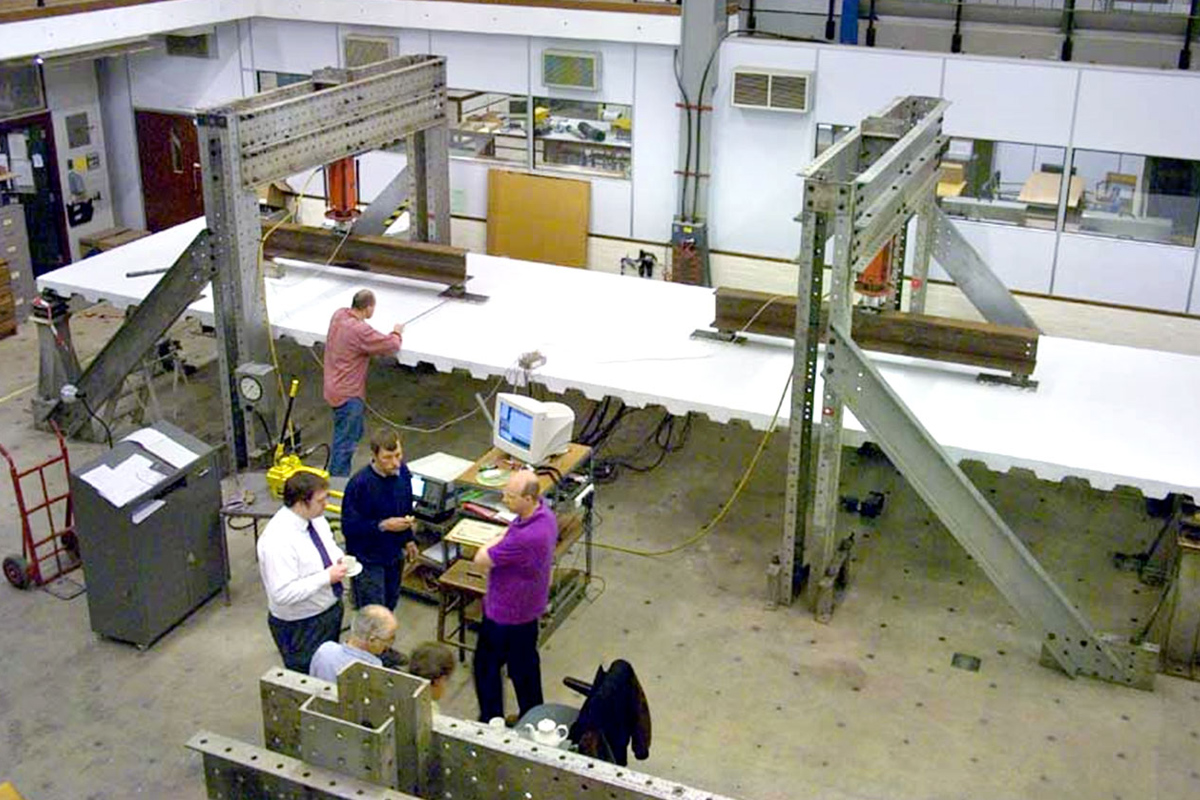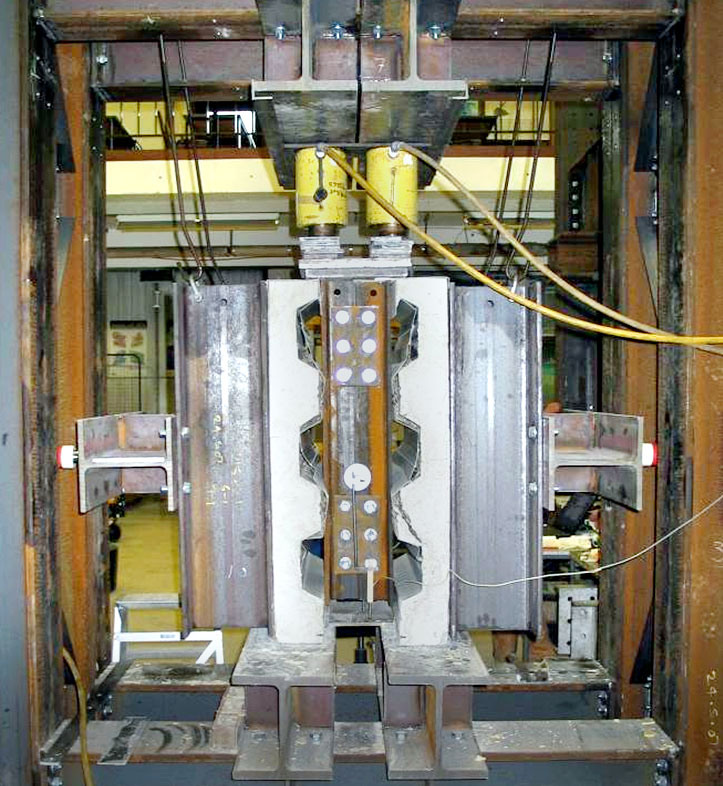Rules for evaluating the design resistance of headed stud connectors through-deck welded within steel decking are provided in NZS 3404.1, 13.3.2.2.
Due to the pitch of the ribs in the deck, it is normally not possible to provide enough shear connectors to provide a resistance equivalent to the lesser of: the tensile resistance of the steel beam; or the compressive resistance of the concrete flange (i.e. full shear connection).
As a consequence of this, the smaller number of shear connectors leads to partial shear connection design often being employed in practice, where the force that is transferred between the concrete slab and the steel beam is limited by the available longitudinal resistance of the shear connectors.
Headed stud connectors only possess a limited amount of ductility, which is defined by the slip capacity evaluated from small scale tests on push specimens. From a large number of push tests that have been undertaken internationally, most design standards assume that a shear connector may be considered ductile if its slip capacity is at least 6 mm.
As beam spans increase, the demand for slip increases so that more shear connectors are required. This is recognized in international design standards through equations that define the minimum degree of shear connection (or minimum numbers of shear connectors) to ensure that the slip demand is always less than the slip capacity of the shear connectors.
Therefore, the minimum degree of shear connector rules are effectively minimum ductility requirements. Limits to the degree of shear connection are currently given in NZS 3404.1, 13.4.6, which are much lower than permitted by overseas standards for beam spans greater than approximately 10 m.
Unfortunately, when using the minimum degree of shear connection rules given in some overseas standards, it can sometimes be found in modern long-span composite beams that there isn’t physically enough ribs in the steel decking to weld enough stud connectors.
Before joining HERA the present writer was responsible for a major industry research programme in the UK that was funded by the British Constructional Steelwork Association (BCSA) and Tata Steel.
From three full-scale beam tests with low degrees of shear connection is was found that 19 mm diameter studs through-deck welded in 60 mm deep UK trapezoidal decking (0.9 mm thick sheets with a yield strength of 350 MPa) possessed a much higher slip capacity than expected in traditional small scale push tests [1],[2],[3]
Since 2008, the Steel Construction Institute (SCI) has extended this earlier work to consider the effect of the higher slip capacity when 19 mm diameter studs are through-deck welded in typical UK trapezoidal decks.
From finite element studies, new minimum degree of shear connection rules have been developed for specific cases when the slip capacity of the shear connectors can be considered to be greater than 6 mm; also, the practical case when less slip is required for composite beams that are underutilized is considered (e.g. when the design of the beam is limited by serviceability conditions from deflection control).
Unfortunately, the results from the SCI finite element studies are not included in SCI P405 and, as a consequence of this, we’re currently independently verifying the new minimum degree of shear connection rules through their own finite element analyses as a Levy-funded initiative that was approved by the Steel Research Panel.
Should our work indicate that the SCI rules can be considered appropriate for Australasian conditions, it is hoped that these can be introduced within the forthcoming new composite design standard AS/NZS 2327.
- Hicks SJ, Smith AL. Stud Shear Connectors in Composite Beams that Support Slabs with Profiled Steel Sheeting. Structural Engineering International. 2014. 24(2), pp. 246-253, DOI: http://dx.doi.org/10.2749/101686614X13830790993122
- Hicks S. Strength and ductility of headed stud connectors welded in modern profiled steel sheeting. Steel Construction. 2010. 44(1), pp. 2-10.
- Hicks S. Strength and ductility of headed stud connectors welded in modern profiled steel sheeting. Structural Engineer, 2007. 85(10), pp. 32-38.
Update shared by our General Manager Structural Systems Dr Stephen Hicks

